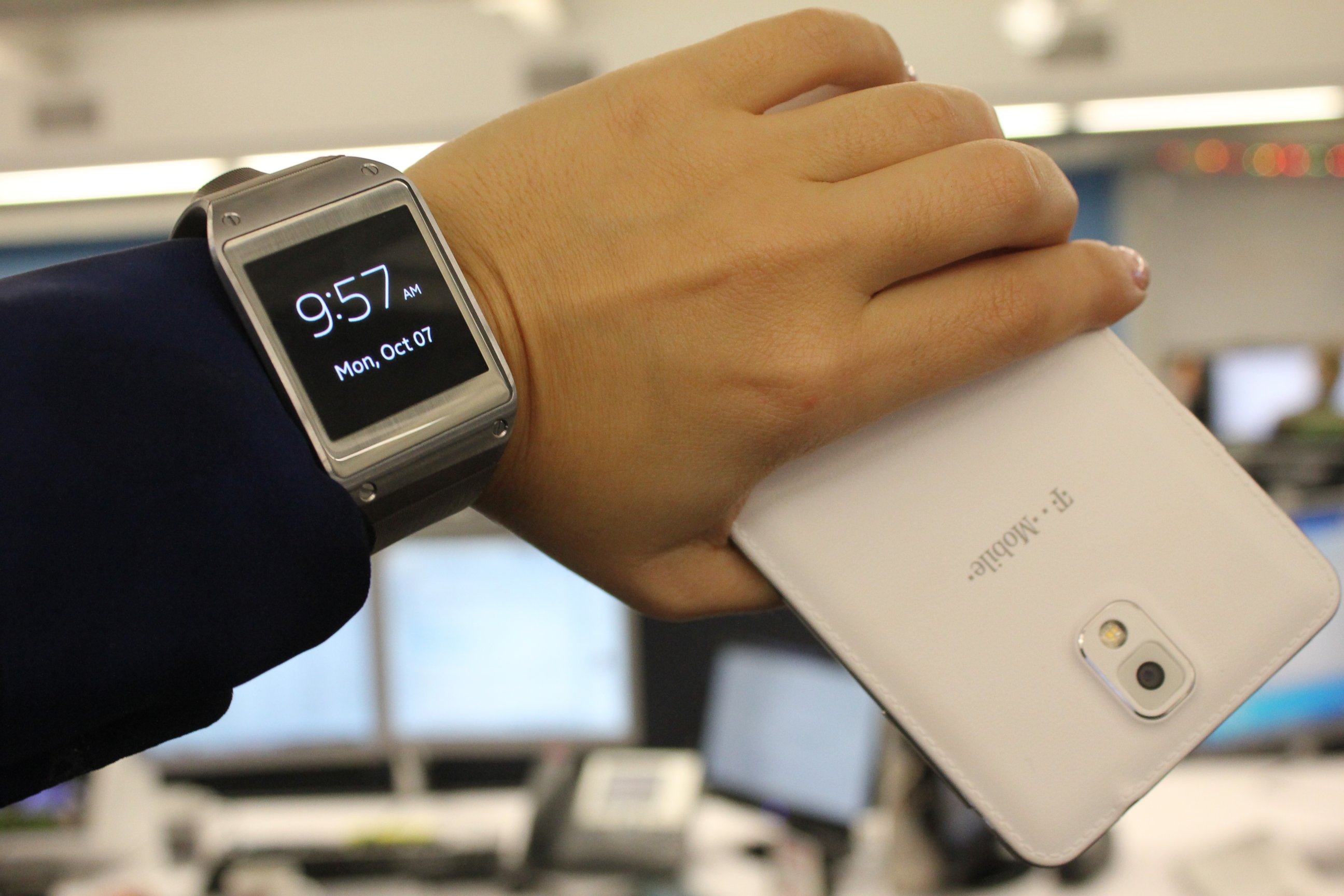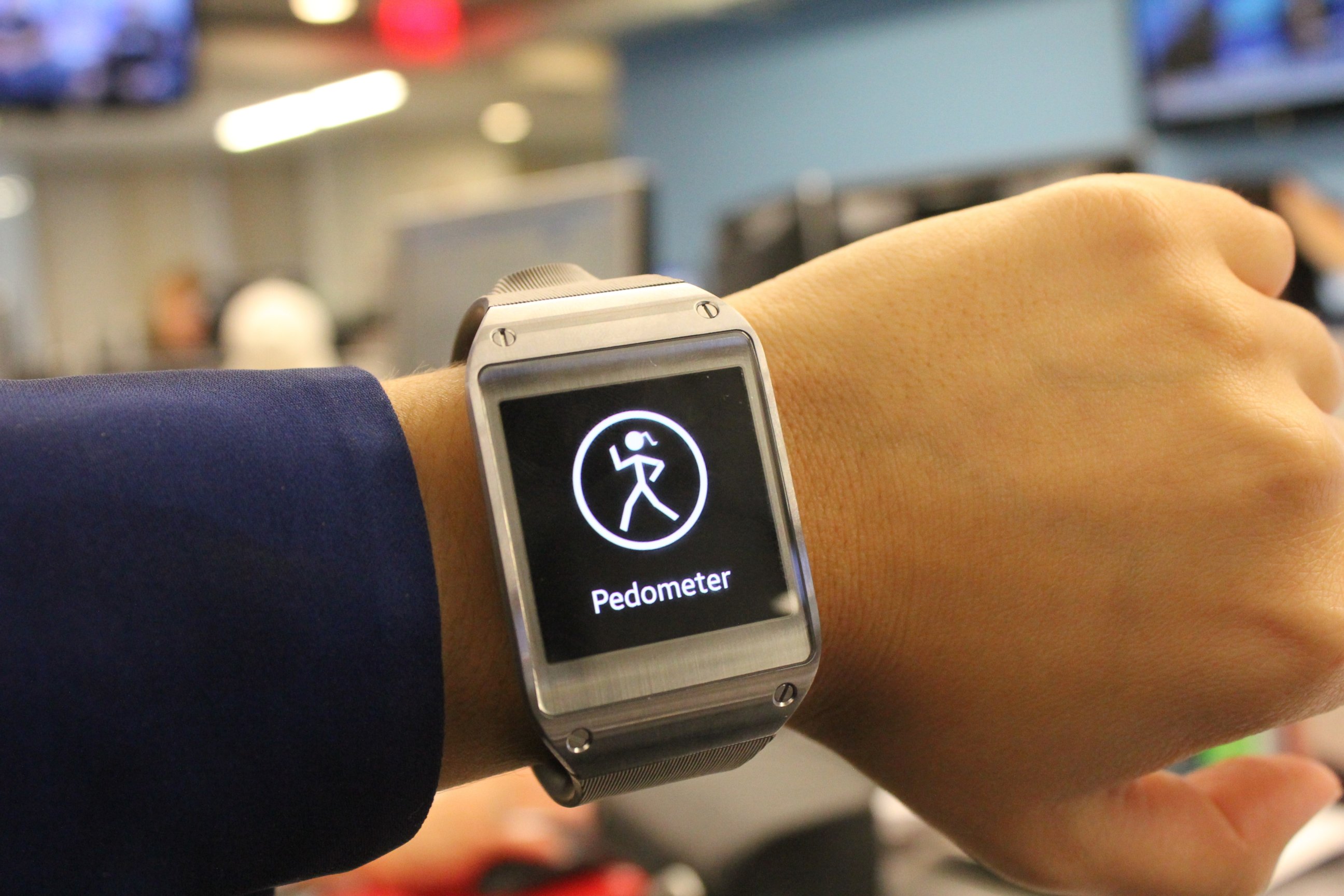Galaxy Gear Review: The Next Big Thing Is Not Here
Is Samsung's new watch really that much smarter than the one on your wrist?
Oct. 7, 2013 — -- There are two reasons you might be wearing a watch right now. The first is obvious -- to tell time. The second? Because it looks good.
If you're not wearing a watch, there are probably reasons for that too. And one of the most likely is that you check the time when you pull out your phone to see if you have a new email or text message.
Smartwatches promise to bring those two things -- a watch and a smartphone -- together.
Samsung's Galaxy Gear is the first major smartwatch to arrive -- Google, Apple and Microsoft are all rumored to have their own high-tech bracelets up their respective sleeves. The Gear, which starts at $300 and requires Samsung's newest Note 3 phone to work, allows you to pick up calls with a tap of a button, reminds you of your meetings and even puts a camera and some apps on your body.
While the Gear is an interesting meld of old and new technology, is it really the next big thing?
Functional but Not Comfortable
The Gear looks just like the high-tech watch you'd expect Dick Tracy or James Bond to wear -- Samsung is even talking that up in its latest ad. But that's not always a good thing.
A rubberish plastic band, which is available in a selection of colors, including orange, gray and pink, straps a 1.63-inch screen to your wrist. The face is a little bigger than Walter White's Casio calculator watch, but it's the heft that's underneath it that makes it very chunky and uncomfortable to wear.

I've long worn a larger men's-style watch, but the Gear's rectangular screen doesn't form to your wrist and fits more like a medical or tracking device than a piece of jewelry or an accessory. While the Pebble smartwatch has a similar tech look, it conforms much more nicely to your arm.
Over the past week I have repeatedly taken the Gear off and left it behind in meetings or on my desk at night because it just hasn't been comfortable to wear. In fact, it actually took me awhile to write this review, because just keeping the watch on for longer periods of time was a challenge.
Good luck keeping this watch on your wrist
And when I wasn't taking the watch off because of discomfort, I was taking it off to charge it. The LCD display, as opposed to the E Ink screen on the Pebble, takes a major hit on the endurance. The day and a half of moderate use also might be more tolerable if you didn't need the proprietary charger to get it back up and running. Instead of a regular micro-USB port, you have to attach the watch to a charging station.
A Watch That Doesn't Listen
But when the watch is on there is no shortage of things you can do with it.
Yes, it's true, you can make calls with the Gear. When it is paired with the Note 3 via Bluetooth, you can swipe up on the Gear's screen, type in the number on the tiny keypad and then use the built-in mic and speaker to make the call. The quality of the call is good enough to convey some basic information but only when sitting in a quiet apartment or office. While I thought I looked like I was Dick Tracy holding the watch up to my mouth and ear on a crowded New York City corner, I couldn't hear a word. Luckily, I'm not a real detective.

The same goes for the voice control. In my office, the watch could convert my speech to a text message fairly accurately, but in a cab when I tried to say "this is a piece of crap" it sent the message as "this is a pizza map." The Moto X's touchless controls and Google Glass's voice recognition have been far more accurate in my testing.
Navigating the watch with the touchscreen is a better experience, though not an incredibly intuitive one. On the main screen you are presented with the time and the weather, and swiping to the left or right presents you with other menus. It took me longer than it should to rearrange the order of those apps using the companion app on the Galaxy Note.
I found myself using the built-in pedometer the most, yet it was buried five swipes deep. And I didn't figure out until day five that double-tapping twice on the screen could bring up the battery life meter and the settings menu. Additionally, flicking the watch should turn on the screen but more times than not I had to press the power button to just see what time it was. That's a problem for a time-telling device.
At least you look like you are doing something cool while navigating the menus
Getting to the camera is much more intuitive and is surprisingly fun to play with. Swiping down from the top of the screen launches a small viewfinder for the 1.9-megapixel camera on the band. I didn't use the functionality all that much -- the Note 3's 13-megapixel camera takes much much better photos -- but when I went on a long hike I found it easier to take more playful shots and videos. But the Gear's most useful trick really is when it puts your phone's notifications on your wrist. Calendar reminders, emails and text message alerts all appear on the screen when the watch is within range of the phone. More than a few times the watch vibrated and reminded me to go to an appointment and kept me from checking my phone for a new email.
Notifications are limited, though. For instance, I couldn't figure out how to get alerts for Gmail message and there is no Twitter or Facebook support at the moment. You still are stuck picking up your phone too many times to see details and important alerts.
But as Samsung works with app developers that should change. There are already a decent number of apps, including fitness apps such as Runtastic and Runkeeper. Others, such as Vivino, which lets you take a photo of a wine label and get more information, are fun to play with.
Bottom Line
It turns out that the Galaxy Gear isn't a very smart watch. Sure, it might do more than the watch you are wearing right now -- at least on paper -- but your everyday watch can tell time faster than the Gear, and is certainly more comfortable and attractive. And while the Gear does put some smartphone functionality on your wrist, it still requires you to grab your phone quite a bit, whether it is for installing apps or checking for more information about certain notifications. And that's all assuming you can keep it on for long enough, given the comfort and battery life hurdles.
For $300, the Gear is very clearly a first generation product in need of refinement and added compatibility. Wearable computing might be the Next Big Thing, as the ads say, but the Galaxy Gear is not the next big thing for you.




